Source: Adastra 2018, published by the Sussex Biodiversity Record Centre, February 2019
The beginning of 2018 continued as we had finished 2017. Brad Scott, my co-recorder, Jacqui Hutson and I filled in the unrecorded gaps in our home hectads. Brad scoured the lanes and woods around Hartfield and Withyham, Jacqui from Plumpton towards the more difficult, built up area around Burgess Hill and I slowly pressed on along the coast, nose pressed to the chalk looking for miniscule plants. We occasionally escaped our home patches with a few forays to the east of the county and held some productive field meetings in a variety of locations.
Between February and August we added over 2160 records to the database and turned the hectads TQ31, TQ41 and TQ43 green which means at least 40 species have been recorded in each of the 25 tetrads in each hectad. Many more records have been added since August and TQ40 around Newhaven is now green and TQ32 is nearly there. Very soon we will have reached 50,000 bryophyte records on our database, an impressive group achievement. Our local patches are benefitting from repeat visits and we are getting a thorough picture of bryo life at Devil’s Dyke, Plumpton and Forest Row.
The beginning of the year was very wet, nice weather for bryophytes but not for humans and we spent most of January postponing trips! We eventually fixed an extremely muddy field meeting at The Mens in West Sussex where David Streeter found the leafy liverwort Lophocolea semiteres in a ditch and, deeper into the wood, on a damp log over a gill. It is an introduced species that is spreading. There is only one previous West Sussex record from a plant nursery so it was intriguing to find it in this wild and seldom visited wood. The soggy conditions didn’t hamper coastal explorations too much and I found the fascinating moss Pterygoneurum ovatum on the cliffs at Saltdean and a large patch of Microbryum davallianum var. commutatum behind a concrete building on the undercliff. So, in January we found a rare liverwort in The Mens and a scarce moss behind the ladies.
In February, Brad found Bryum sauteri with distinctive brown tubers on a sandy tree stump at Owletts Farm near Forest Row; first recorded in Britain in 1962, it has only been recorded in seven tetrads in Sussex. Jacqui found the attractive but scarce moss Plagiomnium elatum in a lovely stretch of the Longford Stream.
Brad and Luśka Mengham had a brief but fruitful trip to Pippingford Park in March, finding tiny Campylostelium saxicola and a small patch of Philonotis fontana before Luśka made the best find of the day, the tiny Entosthodon obtusus, only the second known recent site for it in Sussex. A couple of months later, during an Ouse Project survey, Jacqui and I found a few shoots of P. fontana at High Beeches Garden. We only ever find sparse shoots of this attractive moss in Sussex.
Because of snow and rain it took a small group of us three attempts to visit Christopher Lloyd’s garden at Great Dixter which had no previous bryophyte records whatsoever. We added 72 new records including the delightful Epipterygium tozeri, an uncommon moss in Sussex. It also took two trips to Glynde to identify Rhynchostegiella litorea from an Ash tree near the train tracks. The weather was fine but I lost the specimen and had to go back for more!
I managed to get to the east of the county in June, finding another unrecorded tetrad in aptly named Great Wood near Battle. There was a nice patch of Pogonatum nanum but the most surprising find was a tiny patch of the flask-shaped liverwort Colura calyptrifolia growing on spongy Birch bark. Fairly common in west Wales, it has a strongly Oceanic distribution and is extremely rare in the east and hasn’t been seen in Sussex for nearly 100 years. It was a no-brainer to organise a field meeting here and when we returned in October (welcoming some new and returning bryologists), we checked this colony but even with many pairs of eyes couldn’t find any more. Brad found Riccardia multifida growing on the sandy track by the P. nanum. Also, in the east of the county, Jacqui found the coastal moss Pleurochaete squarrosa at Pett Level.
August was desperately dry and Brad and I looked for bryophytes at an SBRS trip to Shoreham Beach, as desiccated as anywhere in the county. Surprisingly, bryophytes were suffering less than some of the vascular plants and we collected Tortella flavovirens and Trichostomum crispulum and the little liverwort, Cephaloziella hampeana on stable shingle around Widewater Lagoon. In equally dry conditions on a tidal area of the Ouse Hennediella heimii was growing with an unusually long excurrent nerve. Many thanks to Howard Matcham for help with identification.
A few more interesting records rounded off the year; a couple of shoots of the tiny acrocarp Tortula modica were found growing on bare soil in the garden of Monk’s House, it has been found a few times in Sussex but we need to find a larger sample as a voucher specimen is still needed for East Sussex. Scorpiurium circinatum growing on a tree base at Beachy Head made the long trudge up and down the hill to Cow Gap worth the energy and Didymodon umbrosus, nestled between bricks on an Eastbourne street compensated for a fruitless search for a rare liverwort.
We have received a steady stream of valuable records through iRecord including a record of Orthotrichum striatum from Strettington made by Howard Matcham. There were nice records of Riccia fluitans from Quarry Wood at Crowhurst, found by Jacqueline Rose and Rose Dudeney found a new site for Sphagnum magellanicum in Ashdown Forest. Brad visited the site in Duddleswell to check and photograph the raised, red hummocks of this pretty bog-moss.
Brad has been doing excellent work researching historic records and looking at the lives of bryologists who worked the lanes, woods and hills of Sussex a century or more past. He has also delved into herbariums around the country, picking out Sussex specimens, checking them and adding the records to our database. Read his fascinating accounts in the History of Bryology section of our blog.
As always, many thanks to Tom Ottley who continues to help us with our frequent queries and tricky identifications from his base in Wales.
We welcome all keen beginners or experts on organised field meetings or for more informal forays. An up to date programme of weekend field meetings is on our blog on the South East Group section. You can also read about our regular forays in the field and updates on recording progress for The Atlas Project. We are putting together some resources to help beginners and improvers; a set of samples of common bryophytes to aid identification and a supply of guides. You can find us at sussexbryophytes.wordpress.com (or crawling around the Sussex countryside with a hand lens!)
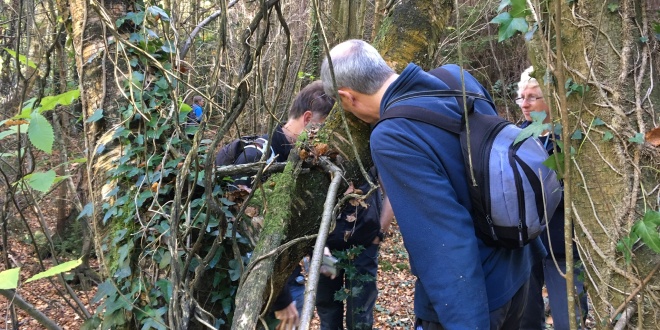

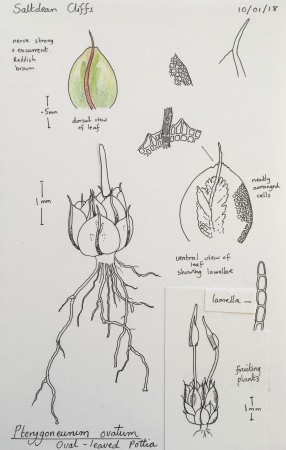
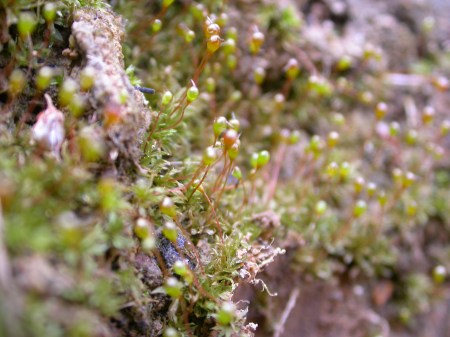
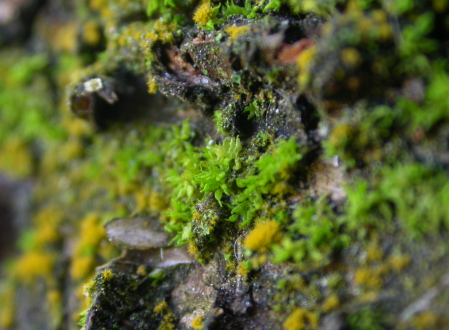
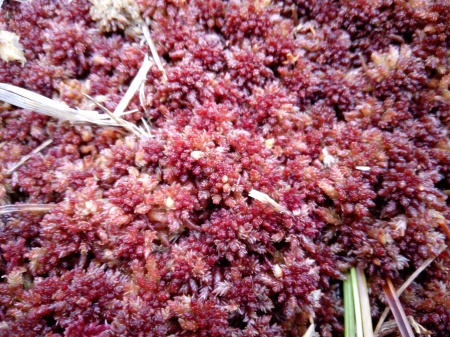
Pingback: Over 2000 Sussex bryophyte records in six months, again | Sussex Bryophytes